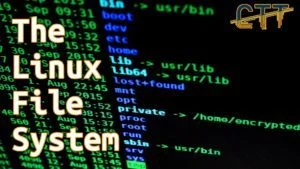Linux File System | Directory Structure

This article details the Linux File System and it’s directory structure.
Linux File System – Root
- / -This is the root directory which should contain only the directories needed at the top level of the file structure
- /bin – This is where the executable files are located. These files are available to all users, but do not add programs manually here
- /dev – These are devices in your system – Not Mounted!
- /etc – Superuser directory commands, configuration files, disk configuration files, valid user lists, groups, ethernet, hosts, etc.
- /lib – Contains shared library files and sometimes other kernel-related files
- /boot – Contains files for booting the system /boot/efi for EFI systems
- /home – Contains the home directory for users and other accounts
- /media – Typically used to mount permanent file systems
- /mnt – Used to mount other temporary file systems, such as cdrom and floppy for the CD-ROM drive and floppy diskette drive, respectively
- /proc – Contains all processes marked as a file by process number or other information that is dynamic to the system
- /tmp – Holds temporary files used between system boots
- /usr – (Unix System Resource) Used for miscellaneous purposes, and can be used by many users. Includes administrative commands, shared files, library files, and others
- /var – Typically contains variable-length files such as log and print files and any other type of file that may contain a variable amount of data
- /sbin – Contains binary (executable) files, usually for system administration. For example, fdisk and ifconfig utlities
- /kernel – Contains kernel files
Home Directory Structure
/home/user is the home directory for your user and it is often abbreviated with a ~. Folders starting with a period are hidden and can be looked at via options in file browser or ls -al in terminal.
- ~/.cache – Cache files for that user
- ~/.config – User Configuration files for your programs.
- ~/.local/share – User Configuration files for your system. Edit Application in start menu, modify system configurations for your user, etc.
- ~/.ssh – SSH configuration and keys
- ~/.vnc – VNC remote desktop configuration files
- ~/.steam – default steam location for games and config files
- ~/.bashrc (FILE) – This file controls shortcuts and aliases that you use in Terminal
This details the Linux File System and should give you a better understanding of how to navigate around in not only a Linux system, but any UNIX based OS for that matter.